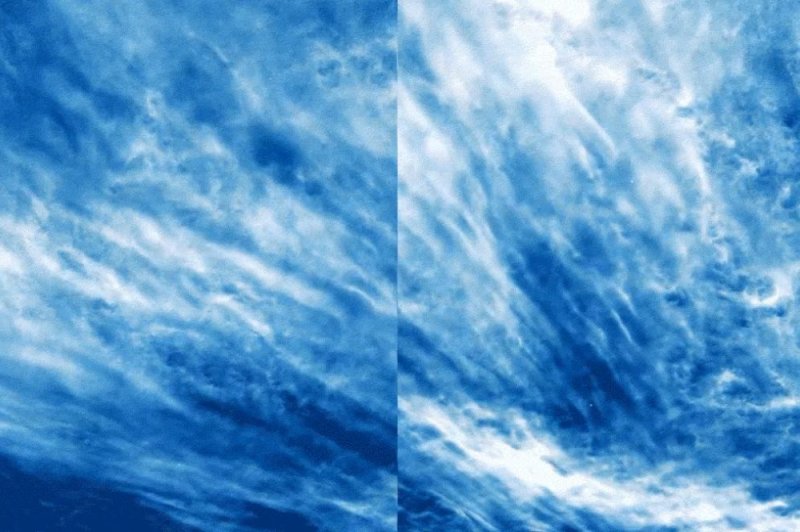Night-shining clouds can help scientists study the interactions between different atmospheric layers. Photo by NASA/Goddard Space Flight Center
Sept. 21 (UPI) -- A giant weather balloon launched by NASA has captured images and video of electric blue clouds.
The seasonal cloud formation is found 50 miles above Earth's poles in the layer of atmosphere known as the mesosphere. The PMC Turbo balloon used seven different imaging systems to document the clouds over the course of five days.
This week, NASA shared several images and video of the electric blue clouds.
Scientists hope the data collected by the balloon's sensors will help scientists better understand the mechanics of atmospheric turbulence. An improved understanding of turbulence can help scientists more accurately model the behavior of oceans, lakes and other planetary atmospheres.
"From what we've seen so far, we expect to have a really spectacular dataset from this mission," Dave Fritts, principal investigator of the PMC Turbo mission, said in a news release. "Our cameras were likely able to capture some really interesting events and we hope will provide new insights into these complex dynamics."
The electric blue clouds are noctilucent clouds, or "night-shining" clouds. The high-altitude clouds form in the spring and summer as the warming lower atmosphere sucks heat from above. The cooling upper atmosphere causes ice crystals to take hold of meteor dust and other high-altitude particles. Occasionally, enough ice crystals accumulate to form visible clouds -- long blue and white sparkling wisps.
NASA's Aeronomy of Ice in the Mesosphere spacecraft has been tracking noctilucent cloud formation for several years, but the observations of the PMC Turbo balloon will provide scientists with an up-close view of the phenomenon.
Earlier this summer, climate scientists confirmed a link between global warming and an increase in night-shining cloud formation.
Scientists with the PMC Turbo mission aren't so much interested in the clouds themselves, but the atmospheric forces -- like gravity waves -- that move and shape them. The cloud particles help scientists visualize the movements of the atmospheric layers.
"This is the first time we've been able to visualize the flow of energy from larger gravity waves to smaller flow instabilities and turbulence in the upper atmosphere," Fritts said. "At these altitudes you can literally see the gravity waves breaking -- like ocean waves on the beach -- and cascading to turbulence."















